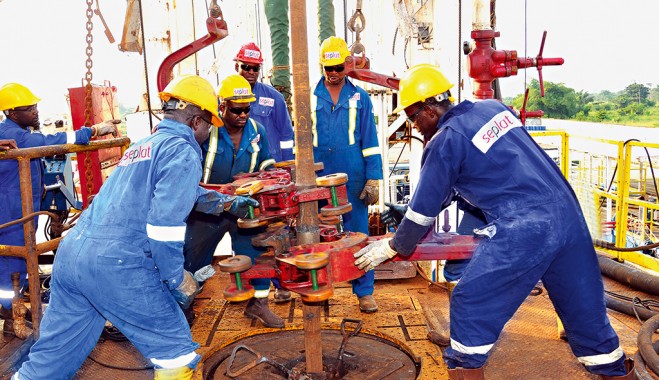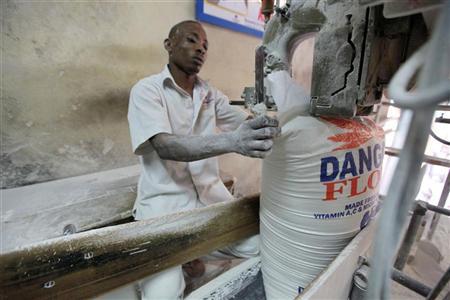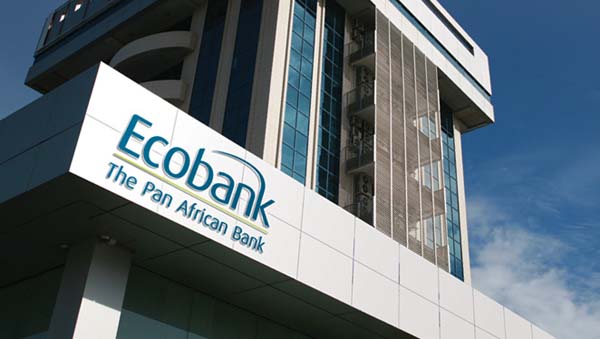Seplat Petroleum Development Company ended its first quarter operations with a bigger loss than it reported in the same period last year. The loss position had grown massively from N4.5 billion in the first quarter of 2016 to more than N45 billion at full year.
The company’s management is expecting a reverse performance this year whereby the first quarter loss would thin down in the course of the year and possibly move from the red into the blue. The turnaround hopes are built on new capacity building the company has undertaken to deal with the constraint in crude oil sales.
The company’s management last year embarked upon upgrade and repair works on two jetties at the Warri refinery aimed at doubling barging volumes and stabilising exports at a gross rate of 30,000 bpd. The work has been completed on one of the two jetties and barging operations are now being re-established with loading of a 100,000 bbl cargo, according to the company’s report. The second jetty is expected to be operational in the second quarter.
The company is also working with government in completing the Amukpe to Escravos pipeline that will create a third export route for the company. The 160,000 bpd facility is expected to come on stream in the second quarter.
Advertisement
The strategy is to significantly de-risk the dispatching of its oil production to the market. Seplat’s managing director/CEO, Mr. Austin Avuru, considers the company’s first quarter a transition period from a constrained oil sales to an enhanced operating capacity that is underway. He assures that management’s actions should lead to a much improved performance outlook for Seplat over the remainder quarters of 2017 and beyond.
Avuru’s optimism is further reinforced by a sustaining strong performance of gas business and strict cost rationalization that has beefed up liquidity. Gas revenue contributed 53% of the company’s turnover in the first quarter, the company said in its report. The company’s chief executive officer expects that Seplat would soon attain a significantly increased level of in-built resilience to external shocks.
The company closed first quarter operations with sales revenue of N14.47 billion, a drop of about 13% year-on-year. Based on the first quarter growth rate, turnover is projected at N57.5 billion for Seplat at the end of 2017. The company expects to gain speed in revenue performance in the remaining quarters based on its new capacity building endeavours.
Advertisement
It closed last year’s operations with a drop of 44% in sales revenue to N63.38 billion –a sustaining fall in sales revenue for the fourth year running. Sales revenue dropped to 40% of the 2013 high in 2016.
The company’s trading in the first quarter ended in a net loss of N5.85 billion, increasing from net loss of N4.48 billion in the same period in 2016. The prospects for returning to profit in the course of the year depend on the extent the company’s alternative export routes can deliver according to expectations. It had closed the 2016 operations with a net loss of more than N45 billion that slashed retained earnings by 37% to N85 billion.
The company achieved some cost savings from cost of sales in the first quarter, which moderated from over 64% of sales revenue to below 60% over the review period. The increased loss for the period was therefore induced by a massive increase in fair value loss from N159 million to N1.66 billion over the same period.
A 20% growth in general and administrative expenses and a 17% rise in cost of finance also affected the bottom line adversely. The company is reducing its balance sheet debts but interest bearing obligations still remained high at about N194 billion at the end of the first quarter.
Advertisement
The company lost N10 per share at the end of the first quarter compared to a loss of N6 per share in the same period last year. Loss per share amounted to N80 for Seplat at the end of 2016. The ability of the company to transit from the first quarter loss to rebuild profit is the critical development to watch out for in the second quarter.
Add a comment







